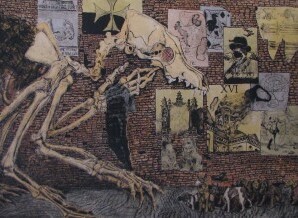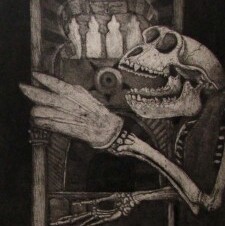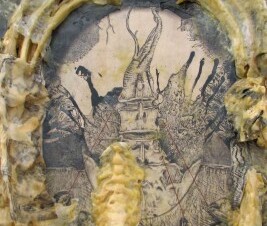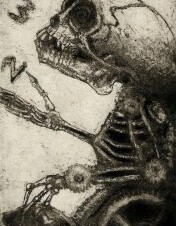Aaron Bass
Product Information
My work is based on an urban interpretation of animism. Animist thinking is a universal human response to our surroundings. A child’s toy or an object that brings comfort (such as a blanket) becomes imbued with an interpreted personality. Similarly, an object can be imbued with scary or diabolic associations by a child without it directly being related to pain. A kitchen knife that caused an accidental cut may be less scary than an antique puppet that never caused any physical trauma. As adults we continue to form attachments to objects beyond the logical or sentimental. An obvious example would be the need to personalize our vehicles and even name them. Many day to day decisions are based unconsciously around relationships we have formed with objects. A particular cup in the kitchen cabinet may be preferred, despite the chief characteristics being no different than the other cups.
Along with the personality of objects, I also have always been fascinated by archetypes and how certain symbols resonate across cultures and time. What is of particular interest to me is the ability of subtler and less obvious archetypal imagery to still transmit an idea or feeling to a wide audience. I developed my visual animist language through a combination of collecting objects that intuitively resonated with me and a passion for reading folklore from a variety of cultures and finding the common imagery.
Through translating these objects on paper they become letters in an alphabet, that when the right combination is used a nuanced experience can be transmitted. For subject matter, I move in between relating universal experiences such as experiencing loss, love, triumph, etc. and trying to describe the deeper more hidden archetypal forces.
In order to access the intuitive parts of my mind, I have found that I need to distract the logical section of my brain. Printmaking has been the ideal process for achieving this as chemical reactions, left-right reversal, layering of color and a host of other technical considerations must be considered at every juncture. The nature of print creation is often slower than more direct methods such as drawing, this too is beneficial. Since it can take months of regular work to achieve an image, the end product has been looked at and explored from varying perspectives which creates a carefully considered image in the end.













 3500 Central Avenue SE
Albuquerque, NM 87106
505.268.6828
3500 Central Avenue SE
Albuquerque, NM 87106
505.268.6828
Follow Us!